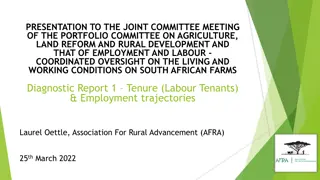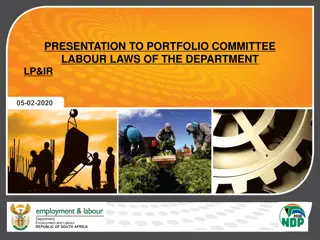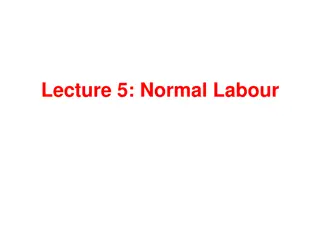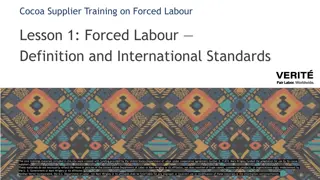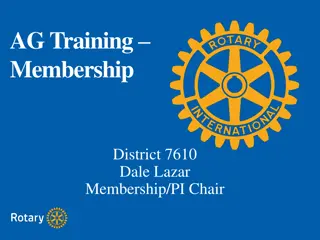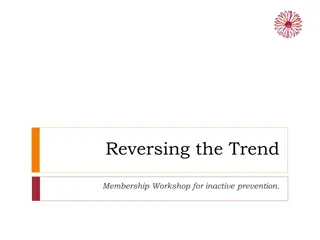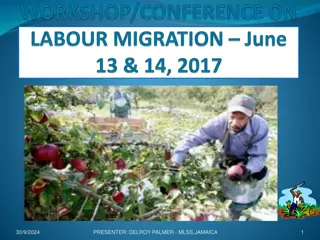Understanding Labour Party Membership Trends
Explore the shifting landscape of Labour Party membership through The Data: Party Members Project. Gain insights into the demographics, preferences, and changes in membership post-GE2015. Discover the similarities and differences between old and new members in terms of age, education, location, and gender distribution.
Download Presentation

Please find below an Image/Link to download the presentation.
The content on the website is provided AS IS for your information and personal use only. It may not be sold, licensed, or shared on other websites without obtaining consent from the author. Download presentation by click this link. If you encounter any issues during the download, it is possible that the publisher has removed the file from their server.
E N D
Presentation Transcript
Ask the Expert 'Revolting Peasants'? Labour's changing membership: who they are and what they want Speaker: Professor Tim Bale, Queen Mary University of London Chair: NidaBroughton, Social Market Foundation Wi-Fi Network: SMF Password: SMF_1989 #AskTheExpert @SMFthinktank | smf.co.uk
'Revolting Peasants'? Labour's 'Revolting Peasants'? Labour's changing membership: who they changing membership: who they are and what they want are and what they want Tim Bale (QMUL), Paul Webb (Sussex) & Monica Poletti (QMUL) Social Market Foundation, 6 September 2016
The Data: Party Members Project (PMP) The Data: Party Members Project (PMP) http://esrcpartymembersproject.org http://esrcpartymembersproject.org Funded by ESRC, 2015-2018 Involves surveys in 2015 of: Members of 6 parties Non-member partisans (strong party supporters) Labour s affiliated trade unionists Survey of Labour s new joiners in 2016 Survey of party leavers in 2017 Interviews with party officials and elites on what they want/expect of members and how they deal with them.
Samples Samples Full members as of #GE2015: 201,293 (c.52% of total December 2015). Sample size 1180 (Fieldwork May 2015). Post #GE2015 members: 187,114 (c.48% of total December 2015). Sample size 1117 (Fieldwork May 2016).
Demographic Similarities & Differences Demographic Similarities & Differences Mean Age: Old = 51; New = 51 ABC1: Old = 76%; New = 75% Graduates: Old = 56%; New = 58% London: Old = 16%; New = 15% South of England outside London: Old = 30%; New = 34% Male/Female: Old = 62:38; New = 48:52
Similarly left Similarly left- -wing on state wing on state- -market market Pro Redistribution: Old = 91%; New = 94%; Voters = 53% Ord people don t get fair share: Old = 94%; New = 96%; Voters = 72% Management tries to get better of employees: Old = 92%; New = 96%; Voters = 69% Spending cuts gone too far: Old = 92%; New = 99%
But considerably more socially liberal But considerably more socially liberal Immigration bad (1)/good (7) for the economy: Old = 5.68; New = 5.79 Censorship of films and magazines: Old = 21%; New = 16%; Voters = 53% Stiffer sentences: Old = 27%; New = 16%; Voters = 75% Teach children to obey authority: Old = 40%; New = 23%; Voters = 77%
More likely to have flirted with the Greens More likely to have flirted with the Greens Voted Labour in #GE2015: Old = 90%; New = 70% Voted Green in #GE2015: Old = 1%; New = 16% Previously a member of the Greens: Old = ?*%; New = 7% Previously a member of the Labour Party: Old = 28%; New = 32%
Less Active (Real Less Active (Real- -world) Campaigners? world) Campaigners? Social media: Old = 51%; New = 70% Leaflets: Old = 43%; New = 28% Canvassing: Old = 36%; New = 15% Never attended a party meeting: Old = 25%; New = 61%
Willing to consider de/re Willing to consider de/re- -selection selection Labour MPs who continually vote against the party s agreed line in Commons votes should be deselected : Agree = 32% (Neither = 29%) Labour MPs who persistently and publicly criticise the leadership in the media should be deselected: New = 55% (incl. 68% post-Corbyn joiners) Mandatory re-selection: Pro = 59%; Anti = 25%
Value leader qualities differently Value leader qualities differently Being in touch with ordinary people: Old = 49%; New = 67% Good communicator: Old = 50%; New = 35% Having strong political beliefs: Old = 32%; New = 49% Strength and authority: Old = 26%; New = 18% Appealing to the average voter: Old = 39%; New = 25% Ability to unite the nation: Old = 34%; New = 26% Ability to unite the party: Old = 27%; New = 13%
Other products are available. (@mattsmithetc & @election_data)
Follow us via. Follow us via . Web: http://esrcpartymembersproject.org Twitter: @ESRCPtyMembers Facebook: ESRC Party Members Project Email: partymembersproject@gmail.com






